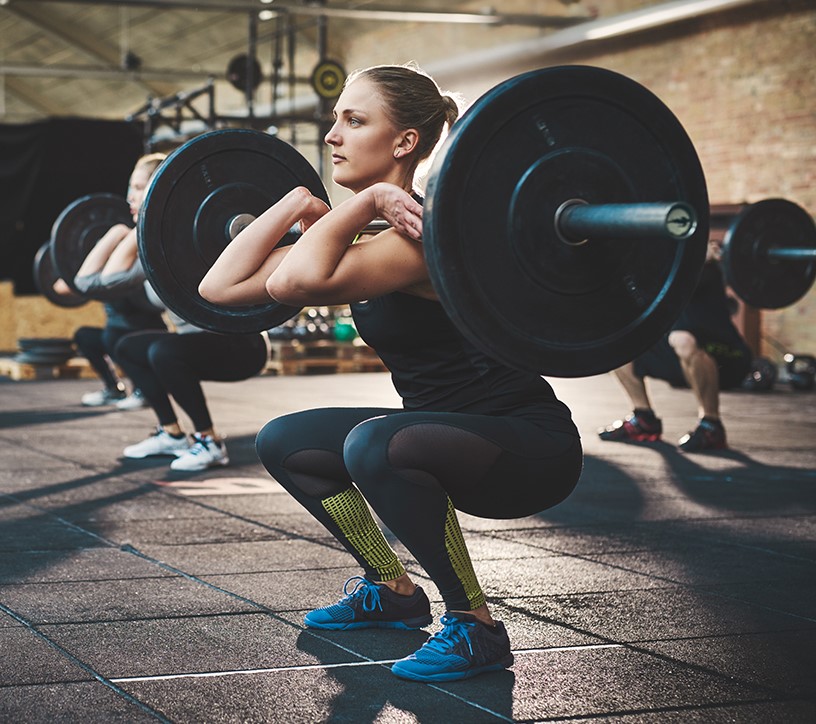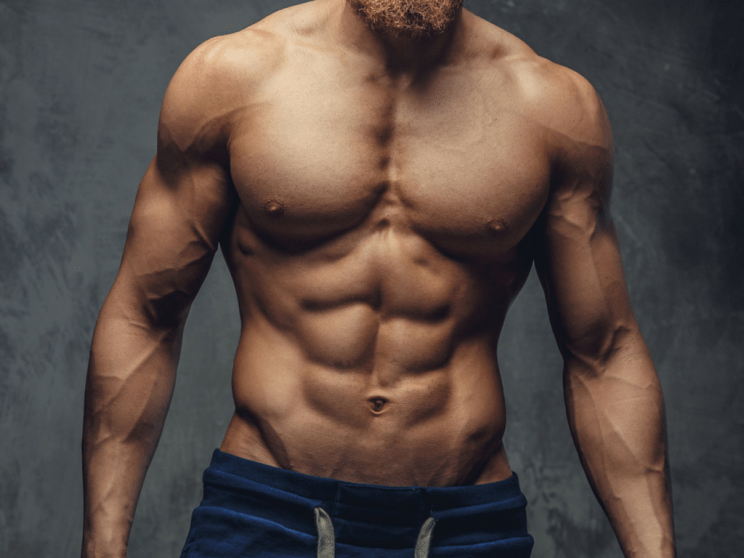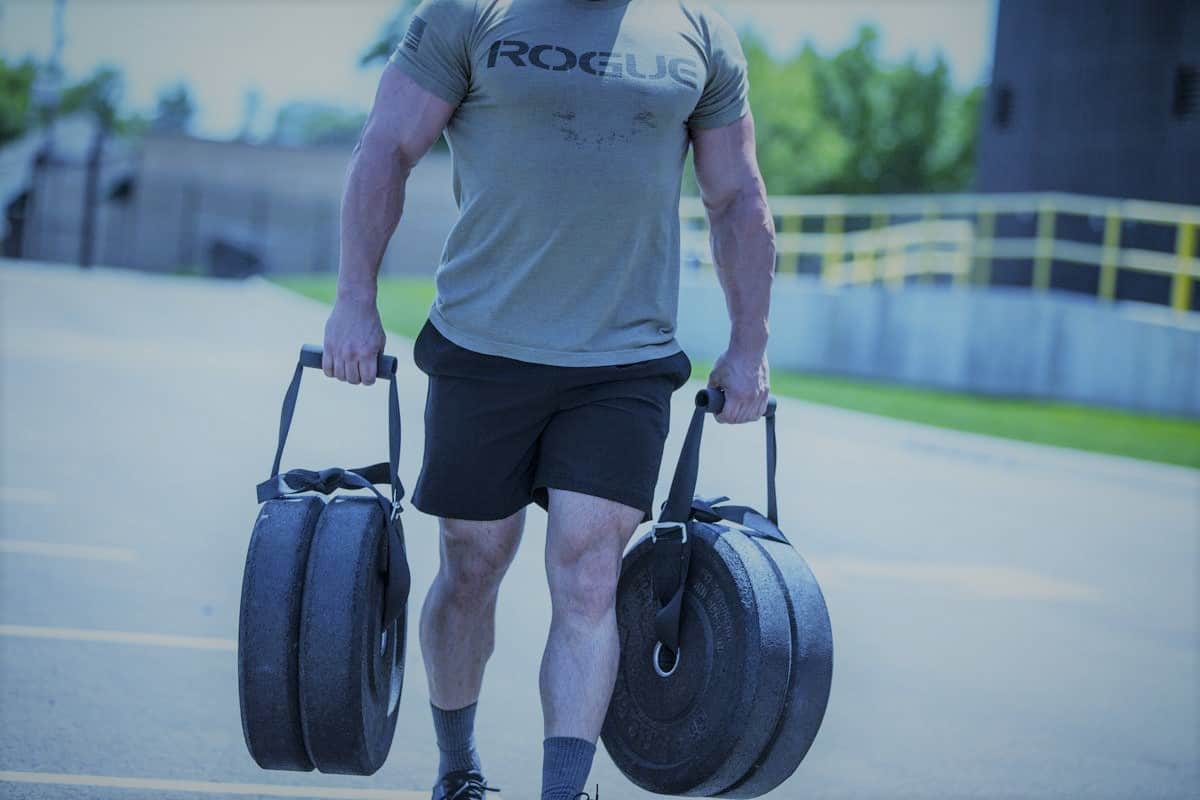There are plenty of misconceptions in the world of lifting. If you’ve spent any amount of time interested in this sport, you’ll have come to realize that conflicting advice isn’t just common, it’s a given. You might have heard that powerlifting is all about fast-twitch muscles and that your slow-twitch fibers are unimportant. Or, you might’ve heard any number of other confusing sentiments like:
- Focus on the big three; but, don’t, actually, and use variation.
- Pulling heavy with great volume is best; but actually, make sure to aim for hypertrophy.
- Lifting with a rounded back is a definite no-go and will murder your spine: but, actually, it’s a good way to shorten the distance between the shoulders and hips and improve leverages.
- There is only one way to squat, and that’s ATG; squatting in different ranges of motion has its benefits.
Over time, however, you’ll realize one thing – the contradictions simply show us that there’s a kernel of truth in both sides if we care enough to look deeper at the evidence. When it comes to working on improving your lifts, optimizing the way you train and activate muscle fibers is potentially one way, and an argument that sometimes gets thrown around is that for the legs especially, slow-twitch fiber training is going to provide you with just as many if not more benefits than fast-twitch fiber training. But the premise is flawed.
This is because powerlifters – just like bodybuilders and, to a degree, weightlifters – generally possess an overall 50/50 split of slow and fast-twitch muscle fibers in their body. Powerlifting is not, in fact, a power sport – it relies on generating maximum force by recruiting as much muscle tissue as possible, which includes both types of fibers.
Type I, Type II, and Lifting Heavy
The thing about type I and type II muscle fibers – or slow-twitch and fast-twitch – is that bro scientists don’t fully understand the complexities of how they work. Hell, I don’t fully understand the complexities of how they work. But I do have a general understanding and have learned a lot from much more experienced and well-read powerlifters like Greg Nuckols and the wonders of scrolling through PubMed when I’m particularly bored. (Note: scrolling through PubMed is a very poor way to research. I’ve done my best to compile information here, but this post is meant to more or less encourage you to be more open regarding many different training ideas.)
Here’s the gist of it – a cross-section cut of any given muscle would reveal type I, type IIa, type IIx, and type IIb muscle fibers. Type I fibers are always recruited first – even when lifting heavy. These fibers have a low power output, but fatigue slowly. Type IIa are stronger but fatigue faster. Type IIb and IIx are even stronger, but fatigue even faster. Type I fibers can be used for hours, specifically for aerobic work.
When you switch over to anaerobic systems, your type IIa fibers kick in. These can do their job consistently for under half an hour. Then, you’ve got type x and type b fibers, which are both specifically very short-term anaerobic muscle fibers with a high and very high power output, and both use ATP to generate said power.
50/50 Fast and Slow-Twitch Fibers
Now here’s the interesting part. A study comparing competitive powerlifters with untrained men showed that, aside from a higher vertical jump and more power output, biopsies of the quadriceps revealed that the powerlifters generally had a 50/50 split of type I and IIa muscle fibers, with very little type IIb (around 1%), while the untrained group had a higher number of IIb muscles (about 12%). It’s known that type IIa muscle fibers can convert into type IIb muscle fibers.
Powerlifters and bodybuilders generally had the same proportions of type I and type II muscle fibers than untrained individuals, however, they mostly had type IIa and very little type IIb (and type IIx). Generally. When muscles respond to stress in the form of strength training and weight training, they convert IIx and IIb muscle fibers into IIa muscle fibers. Why exactly that is isn’t very clear, but it happens.
The thing about muscle fibers is that they can also be pretty individual, but there’s no real good way to knowing the composition of each person’s individual muscle unless you biopsy it. And that involves basically taking a bit of flesh out of your muscle in at least a few places to get a good idea of how that muscle is composed, and that’s not really a fun weekend activity most people are willing to subject themselves to.
Here’s a resource that gives you an idea of generalized type I to type II muscle fiber ratios in the major muscles of the body, as per several different studies:
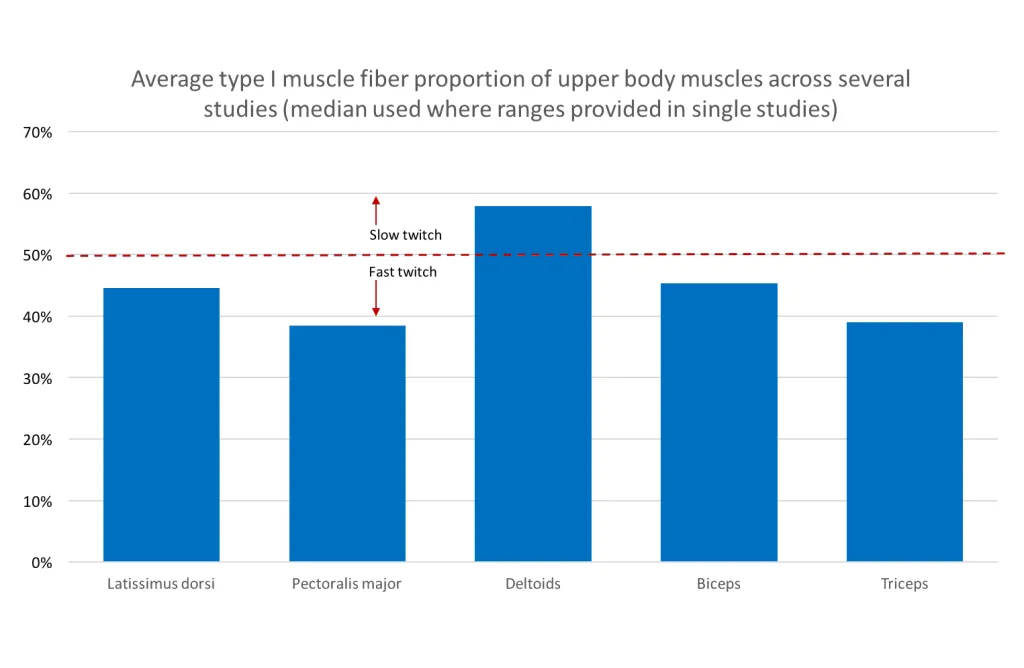
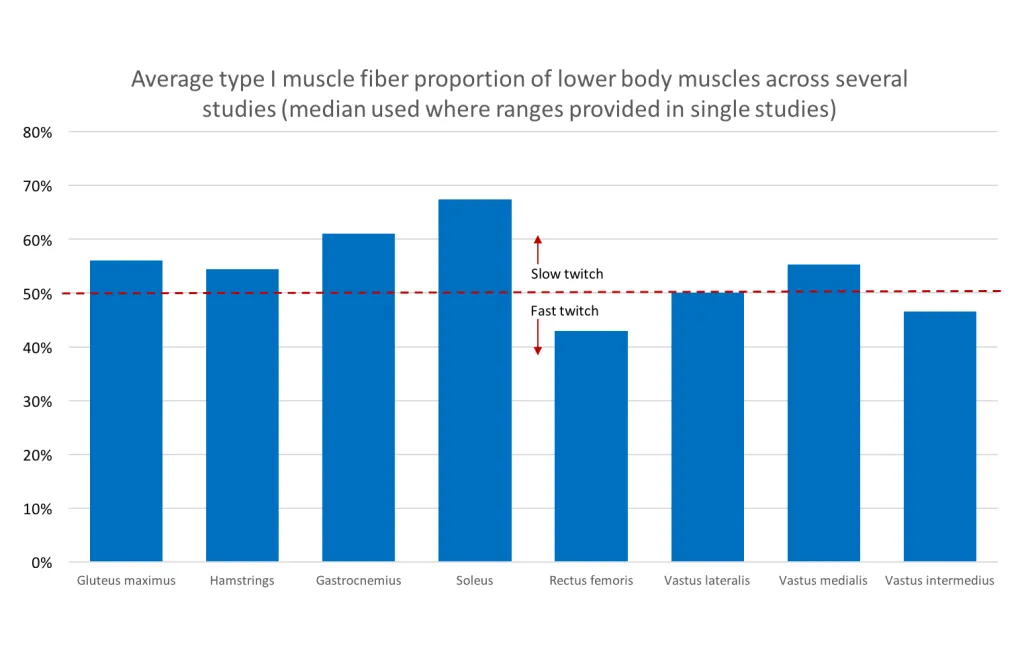
Fast-Twitch and Slow-Twitch Fibers Both Matter
As you see, the only muscle with significant variation from 50/50 or 60/40 is the Soleus, a major calf muscle. Then again, no one ever seriously considered maxing out on the calf press machine, so I doubt that’s really relevant or likely to produce major training revelations for any lifter reading this article.
The main takeaway here is that you have both type I and type II muscle fibers throughout the major movers of the body, and any work you do will increase the thickness of your muscle fibers, increase the size of your muscles, produce more muscle cells (myosin), and so on.
Now, you could of course have the genetics for quads with mostly slow-twitch or mostly fast-twitch muscles, but even certain workout techniques (like testing for a rep max at 70% 1RM or something) won’t give you any useful information to help determine that, so it’s generally best to assume you’ve got something of an even split.
What does that mean for your training, you may ask? It means you’re going to get the best results from a varied training protocol, and that it’s important to remember that powerlifting and weightlifting are sports based around moving the most amount of weight, and that this requires maximum force application, rather than maximum power. Most people peak with power production at around 60% of their max, and it starts to drop off as force skyrockets around 80% of a 1RM.
Muscle is Muscle
For the purposes of powerlifting, getting stronger means several things:
- Training your nervous system to get better at recruiting your muscles and producing force in the squat, deadlift, and bench press.
- Producing more muscle mass to help you move more weight.
Short of getting an entirely new body, the only way to feasibly increase the amount of weight you pull is to increase the amount of muscle you have to move said weight, and as studies have shown, that muscle will tend to be an even split of type I and type II muscle fibers. Both are used when moving very heavy objects, because powerlifting is about maximum force/work (across a certain range of motion, otherwise we might as well measure force production against an immovable object), rather than maximum power, which means you’re going to need as much muscle fiber as you possibly can muster.
Thankfully, muscle is muscle. Type I and II muscle fibers are different, sure, but if we’re talking about how that relates to the amount of weight you can put on the bar, we’re looking at about the same production of force on a per-inch basis, because while type II fibers are larger and produce more power, you’re going to build and use both types.
What this means is that if you take the cross-section of an inch or type I muscle fibers and the cross-section of an inch of type II muscle fibers, you’d have more fibers in the type I cross-section (because they’re smaller), but the strength between both bundles would be more or less the same. This fascination with the difference between type I (slow-twitch fibers) and type II (fast-twitch fibers) is largely irrelevant to powerlifting, and to a degree weight-lifting, because these sports train the recruitment of all muscle fibers, rather than just a specific type.
Yes, a discus thrower is going to build a greater proportion of type II muscle fibers. As will a sprinter or the guy training his fastball. But a powerlifter can’t afford to leave anything in the tank and will likely train his or her motor neurons to get almost every single available fiber firing to pull, push, or squat the barbell on a max lift. When you’re fighting under the bar during a PR, your body isn’t recruiting mostly one type or the other, but as much muscle as humanly possible.
Train at Various Rep Ranges
This is the soundest advice I’ve picked up from the various different discussions surrounding powerlifting and muscle type. Regardless of what your proportions really look like per muscle, you’re going to want to train in a way that efficiently builds more muscle mass and helps you adapt to higher loads for competition lifts. As you approach your genetic limit, short of using gear, you’ll have to switch your training style to continuously push the neural limits of your body and go deeper and deeper into making use of specificity to get good lifts.
But for most lifters, “powerbuilding” is basically the way to go. You don’t have to make use of muscular endurance rep ranges to induce growth in type I or slow-twitch fibers – a moderate rep range for all lifts with a few weeks pre-comp spent working up to heavy singles is a good way to go, as is a linear program that has you lift heavy weight in a competition lift, and do a bunch of lighter accessory work to grow your primary movers and pack muscle onto your frame.

